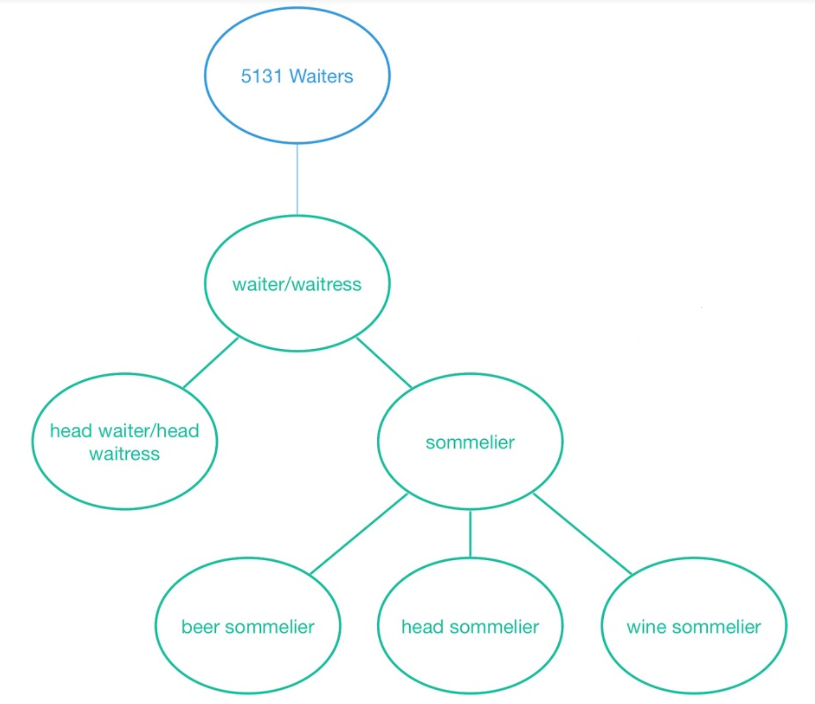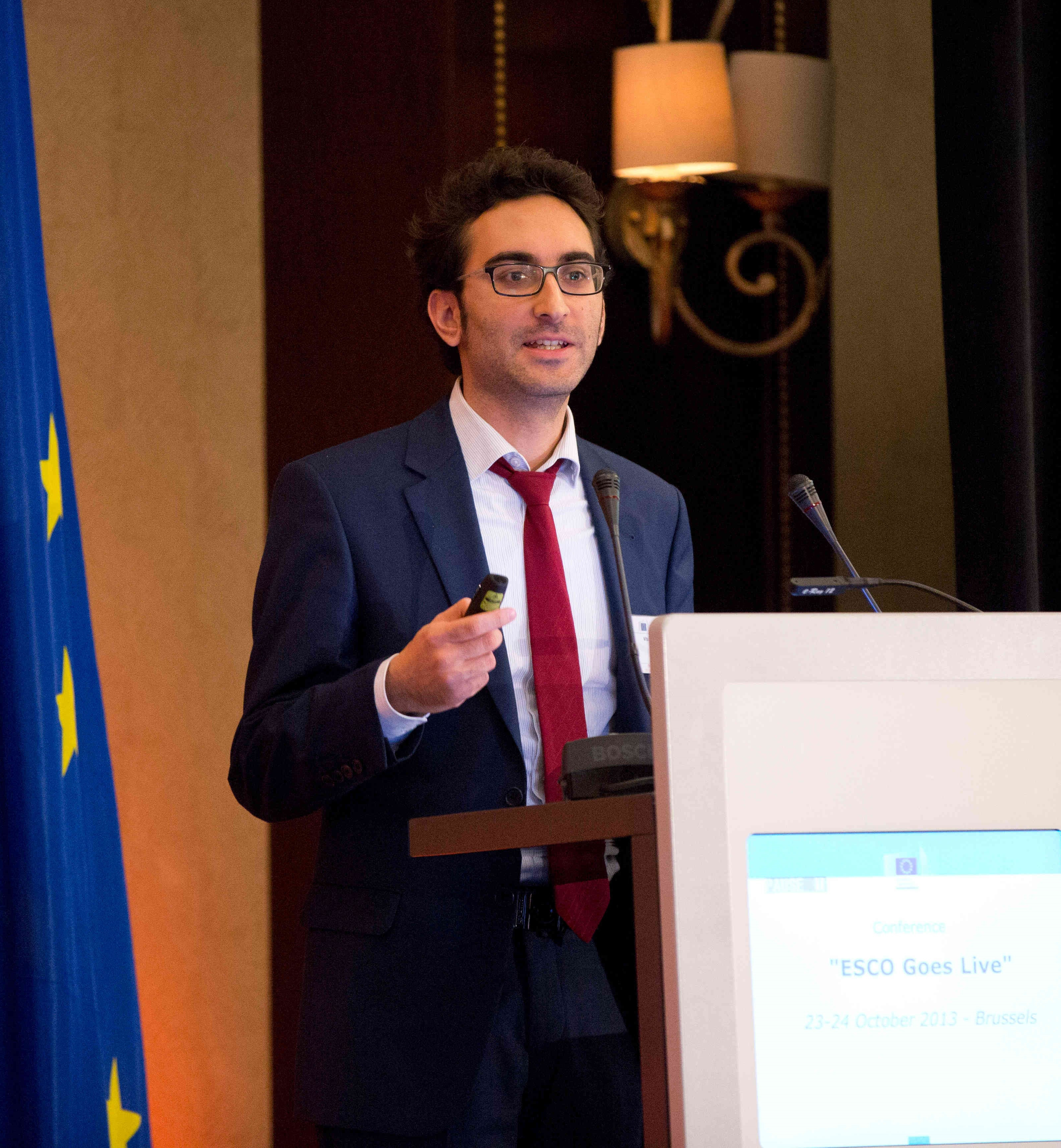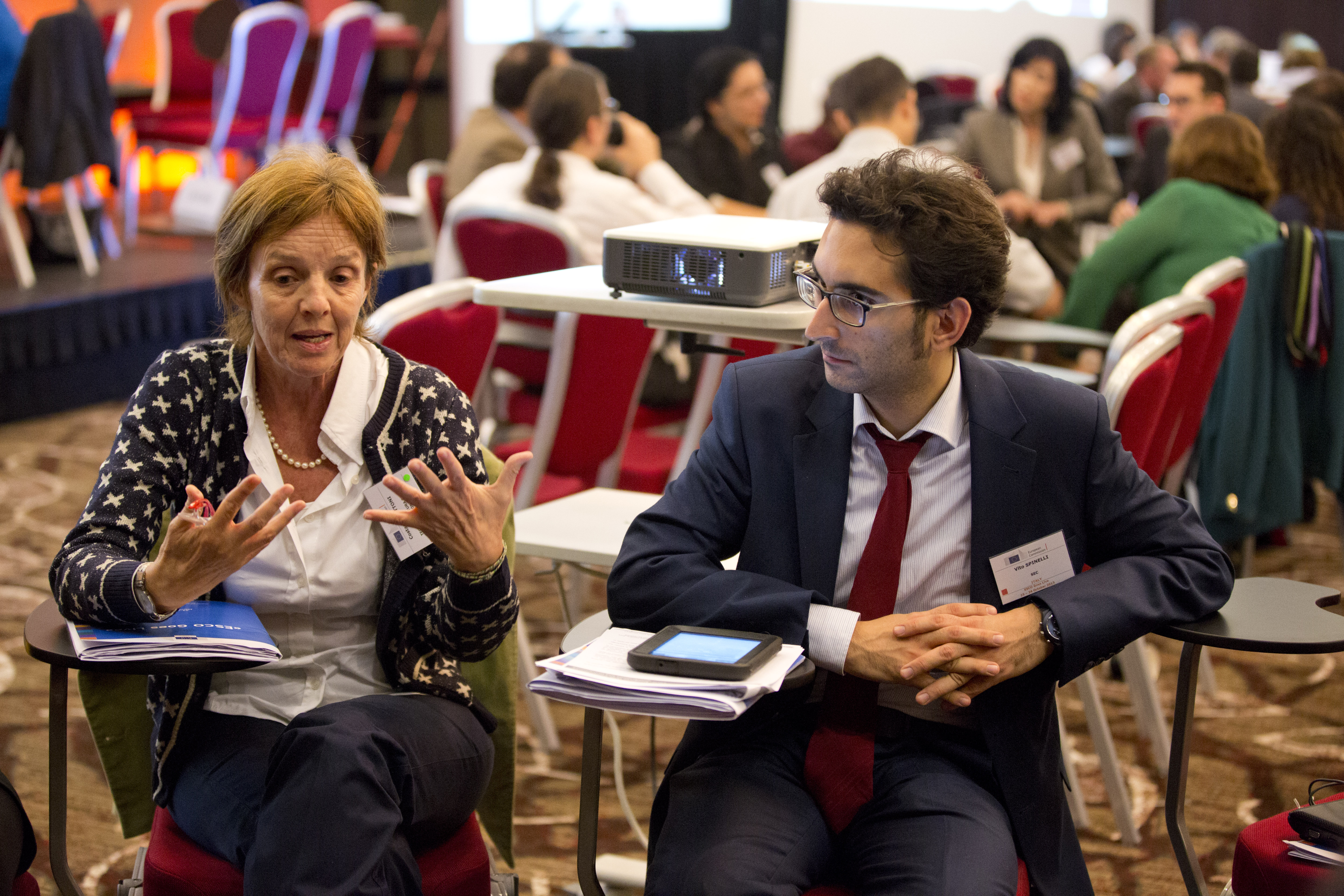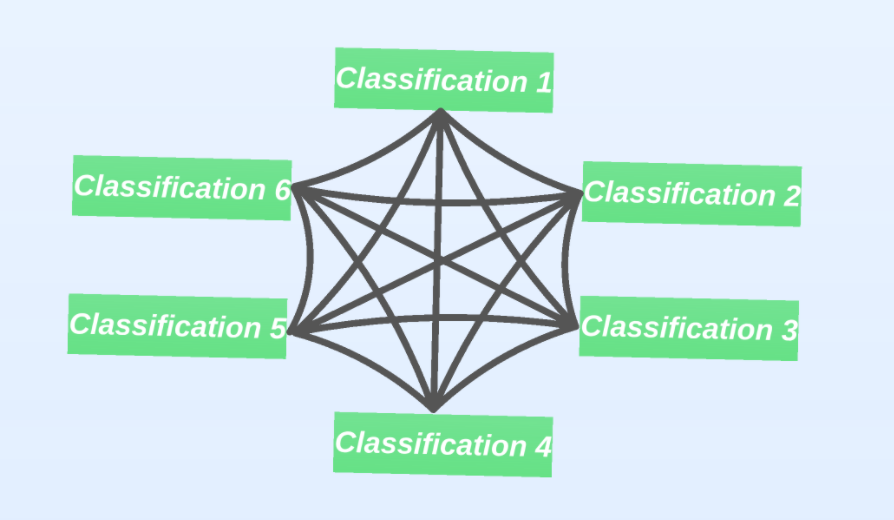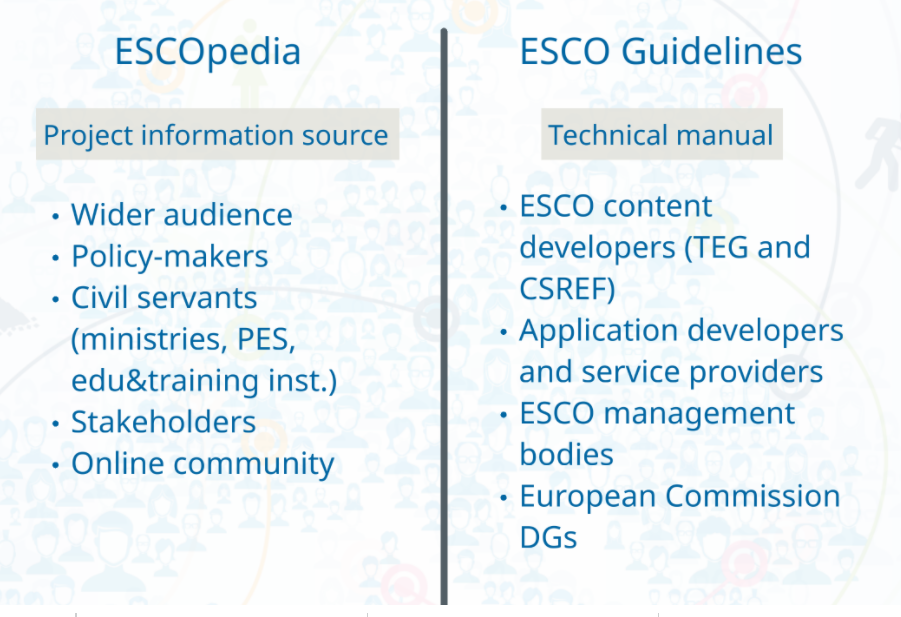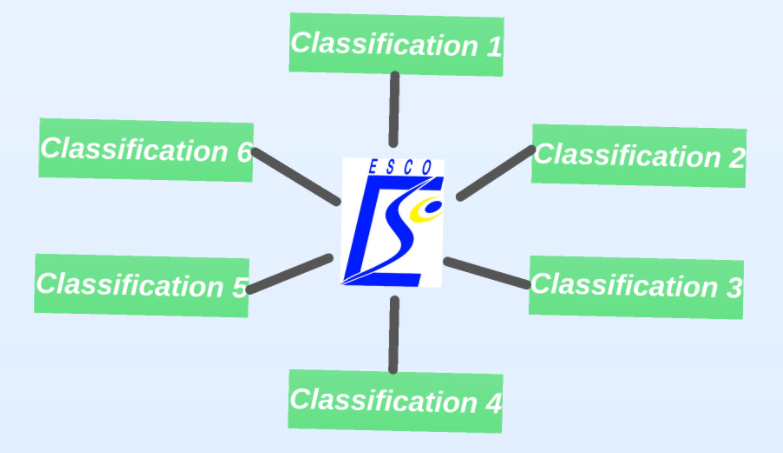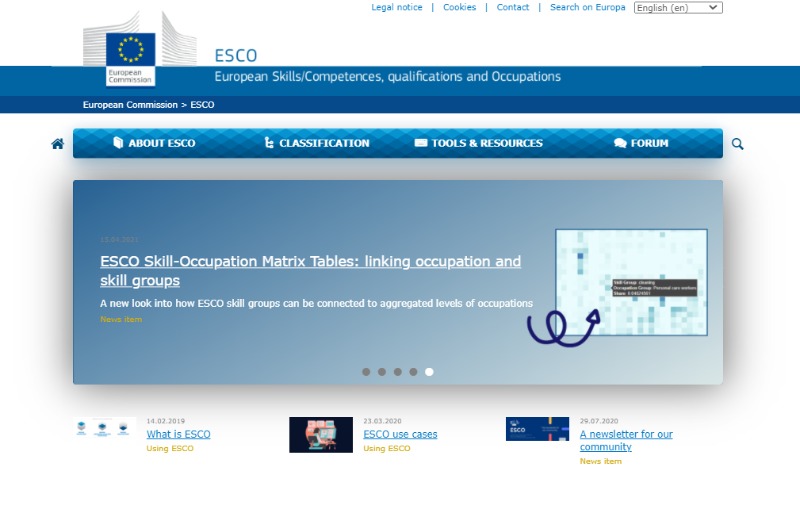ESCO Portal
The top bar menu clusters the main topics of the website. The homepage does not include other menus or buttons, thus giving users confidence that they are not missing any information.
In fact, clicking on one of the main headings opens a sub-menu with additional sub-topics which allow users to access all the content of the portal.
The homepage includes a visual banner that can be swiped to access recent news about the project.
Finally, the bottom of the homepage embeds a tutorial video explaining what the project is about.
The website complies with the visual identity of the European Commission and includes legal information as well as a language toggle that changes of the language of the entire website.
